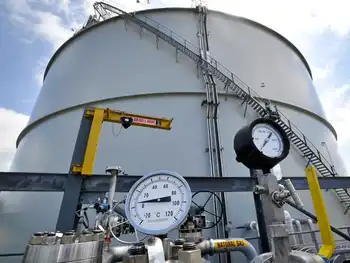Severe heat: 5 electricity blackout risks facing the entire U.S., not just Texas

Protective Relay Training - Basic
Our customized live online or in‑person group training can be delivered to your staff at your location.

- Live Online
- 12 hours Instructor-led
- Group Training Available
Texas power grid highlights ERCOT reliability strains from extreme heat, climate change, and low wind, as natural gas and renewables balance tight capacity amid EV charging growth, heat pumps, and blackout risk across the U.S.
Key Points
Texas power grid is ERCOT-run and isolated, balancing natural gas and wind amid extreme weather and electrification.
✅ Isolated from other U.S. grids, limited import support
✅ Vulnerable to extreme heat, winter storms, low wind
✅ Demand growth from EVs and heat pumps stresses capacity
Texas has a unique state-run power grid facing a Texas grid crisis that has raised concerns, but its issues with extreme weather, and balancing natural gas and wind, hold lessons for an entire U.S. at risk for power outages from climate change.
Grid operator the Electric Reliability Council of Texas, or ERCOT, which has drawn criticism from Elon Musk recently, called on consumers to voluntarily reduce power use on Monday when dangerous heat gripped America’s second-most populous state.
The action paid off as the Texas grid avoided blackouts — and a repeat of its winter crisis — despite record or near-record temperatures that depleted electric supplies amid a broader supply-chain crisis affecting utilities this summer, and risked lost power to more than 26 million customers. ERCOT later on Monday lifted the call for conservation.
For sure, it’s a unique situation, as the state-run power grid system runs outside the main U.S. grids. Still, all Americans can learn from Texas about the fragility of a national power grid that is expected to be challenged more frequently by hot and cold weather extremes brought on by climate change, including potential reliability improvements policymakers are weighing.
The grid will also be tested by increased demand to power electric vehicles (EVs) and conversions to electric heat pumps — all as part of a transition to a “greener” future.
Why is Texas different?
ERCOT, the main, but not only, Texas grid, is unique in its state-run, and not regional, format used by the rest of the country. Because it’s an energy-rich state, Texas has been able to set power prices below those seen in other parts of the country, and its independence gives it more pricing authority, while lawmakers consider market reforms to avoid blackouts. But during unusual strain on the system, such as more people blasting their air conditioners longer to combat a record heat wave, it also has no where else to turn.
A lethal winter power shortage in February 2021, during a Texas winter storm that left many without power and water, notoriously put the state and its independent utility in the spotlight when ERCOT failed to keep residents warm and pipes from bursting. Texas’s 2021 outage left more than 200 people dead and rang up $20 billion in damage. Fossil-fuel CL00, 0.80% backers pointed to the rising use of intermittent wind power, which generates 23% of Texas’s electricity. Others said natural-gas equipment was frozen under the extreme conditions.
This week, ERCOT is asking for voluntary conservation between 2 p.m. and 8 p.m. local time daily due to record high electricity demand from the projected heat wave, and also because of low wind. ERCOT said current projections show wind generation coming in at less than 10% of capacity. ERCOT stressed that no systemwide outages are expected, and Gov. Greg Abbott has touted grid readiness heading into fall, but it was acting preemptively.
A report late last year from the North American Electric Reliability Corp. (NERC) said the Texas system without upgrades could see a power shortfall of 37% in extreme winter conditions. NERC’s outlook suggested the state and ERCOT isn’t prepared for a repeat of weather extremes.











